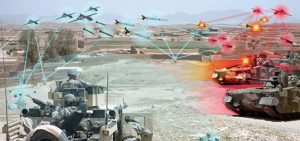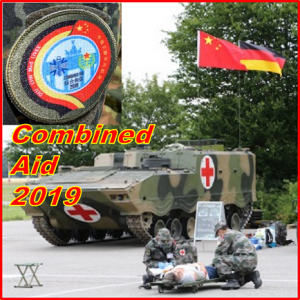[Editor’s Note: Mad Scientist Laboratory is pleased to publish today’s post by guest bloggers LTC Arnel P. David, LTC (Ret) Patrick James Christian, PhD, and Dr. Aleksandra Nesic, who use storytelling to illustrate how the convergence of Artificial Intelligence (AI), cloud computing, big data, augmented and enhanced reality, and deception detection algorithms could complement decision-making in future specialized engagements. Enjoy this first in a series of three posts exploring how game changing tech will enhance operations in the Human Domain!]

It is 2028. Lt Col Archie Burton steps off the British A400-M Atlas plane onto the hard pan desert runway of Banku Airfield, Nigeria. This is his third visit to Nigeria, but this time he is the commander of the Engagement Operations Group – Bravo (EOG-B). This group of bespoke, specialized capabilities is the British Army’s agile and highly-trained force for specialized engagement. It operates amongst the people and builds indigenous mass with host nation security forces. Members of this outfit operate in civilian clothes and speak multiple languages with academic degrees ranging from anthropology to computational science.

Archie donned his Viz glasses on the drive to a meeting with local leadership of the town of Banku. Speaking to his AI assistant, “Jarvis,” Archie cycles through past engagement data to prep for the meeting and learn the latest about the local town and its leaders. Jarvis is connected to a cloud-computing environment, referred to as “HDM” for “Human Doman Matrix,” where scientifically collected and curated population data is stored, maintained, and integrated with a host of applications to support operations in the human domain in both training and deployed settings.
Several private organizations that utilize integrated interdisciplinary social science have helped NATO, the U.K. MoD, and the U.S. DoD develop CGI-enabled virtual reality experiences to accelerate learning for operators who work in challenging conflict settings laden with complex psycho-social and emotional dynamics that drive the behaviour and interactions of the populations on the ground. Together with NGOs and civil society groups, they collected ethnographic data and combined it with phenomenological qualitative inquiry using psychology and sociology to curate anthropological stories that reflect specific cultural audiences.
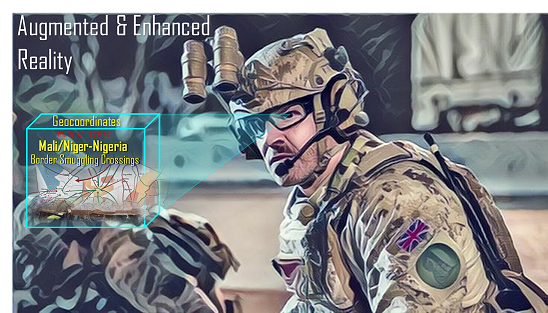
EOG-Bravo’s mission letter from Field Army Headquarters states that they must leverage the extensive and complex human network dynamic to aid in the recovery of 11 females kidnapped by the Islamic Revolutionary Brotherhood (IRB) terrorist group. Two of the females are British citizens, who were supporting a humanitarian mission with the ‘Save the Kids’ NGO prior to being abducted.
At the meeting in Banku, the mayor, police chief, and representative from Save the Kids were present. Archie was welcomed by handshakes and hugs by the police chief who was a former student at Sandhurst and knows Archie from past deployments. The discussion leaped immediately into the kidnapping situation.
“The girls were last seen transiting a jungle area North of Oyero. Our organization is in contact by email with one of the IRB facilitators. He is asking for £2 million and we are ready to make that payment,” said Simon Moore of Save the Kids.
Archie’s Viz glasses scanned the facial expressions of those present and Jarvis cautioned him regarding the behaviour of the police chief whose micro facial expressions and eyes revealed a biological response of excitement at the mention of the £2M.
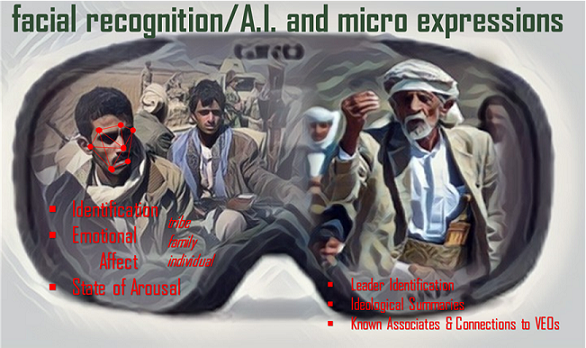
Archie asks “Chief Adesola, what do you think? Should we facilitate payment?”
“Hmmm, I’m not sure. We don’t know what the IRB will do. We should definitely consider it though,” said Police Chief Adesola.
 The Viz glasses continued to feed the facial expressions into HDM, where the recurrent AI neural network recognition algorithm, HOMINID-AI, detected a lie. The AI system and human analysts at the Land Information Manoeuvre Centre (LIMOC) back in the U.K. estimate with a high-level of confidence that Chief Adesola was lying.
The Viz glasses continued to feed the facial expressions into HDM, where the recurrent AI neural network recognition algorithm, HOMINID-AI, detected a lie. The AI system and human analysts at the Land Information Manoeuvre Centre (LIMOC) back in the U.K. estimate with a high-level of confidence that Chief Adesola was lying.
At the LIMOC, a 24-hour operation under 77th Brigade, Sgt Richards, determines that the Police Chief is worthy of surveillance by EOG-Alpha, Archie’s sister battlegroup. EOG-Alpha informs local teams in Lagos to deploy unmanned ground sensors and collection assets to monitor the police chief.
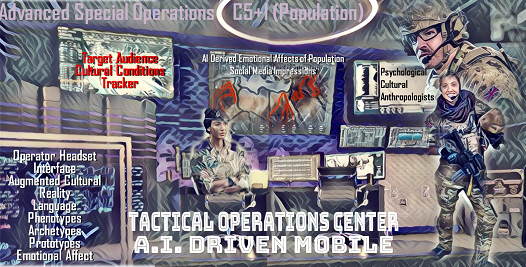
Small teams of 3-4 soldiers depart from Lagos in the middle of the night to link up with host nation counterparts. Together, the team of operators and Nigerian national-level security forces deploy sensors to monitor the police chief’s movements and conversations around his office and home.
The next morning, Chief Adesola is picked up by a sensor meeting with an unknown associate. The sensor scanned this associate and the LIMOC processed an immediate hit — he was a leader of the IRB; number three in their chain of command. EOG-A’s operational element is alerted and ordered to work with local security forces to detain this terrorist leader. Intelligence collected from him and the Chief will hopefully lead them to the missing females…
If you enjoyed this post, stay tuned for Part 2 on the Human Domain Matrix, Part 3 on Emotional Warfare in Yemen, and check out the following links to other works by today’s blog post authors:
– Operationalizing the Science of the Human Domain by Aleks Nesic and Arnel P. David
– A Psycho-Emotional Human Security Analytical Framework by Patrick J. Christian, Aleksandra Nesic, David Sniffen, Tasneem Aljehani, Khaled Al Sumairi, Narayan B. Khadka, Basimah Hallawy, and Binamin Konlan
– Military Strategy in the 21st Century: People, Connectivity, and Competition by Charles T. Cleveland, Benjamin Jensen, Susan Bryant, and Arnel P. David
… and see the following MadSci Lab blog posts on how AI can augment our Leaders’ decision-making on the battlefield:
– Takeaways Learned about the Future of the AI Battlefield
– The Guy Behind the Guy: AI as the Indispensable Marshal, by Mr. Brady Moore and Mr. Chris Sauceda
LTC Arnel P. David is an Army Strategist serving in the United Kingdom as the U.S. Special Assistant for the Chief of the General Staff. He recently completed an Artificial Intelligence Program from the Saïd Business School at the University of Oxford.
LTC (Ret) Patrick James Christian, PhD is co-founder of Valka-Mir and a Psychoanalytical Anthropologist focused on the psychopathology of violent ethnic and cultural conflict. He a retired Special Forces officer serving as a social scientist for the Psychological Operations Task Forces in the Arabian Peninsula and Afghanistan, where he constructs psychological profiles of designated target audiences.
Aleksandra Nesic, PhD is co-founder of Valka-Mir and Visiting Faculty for the Countering Violent Extremism and Countering Terrorism Fellowship Program at the Joint Special Operations University (JSOU), USSOCOM. She is also Visiting Faculty, U.S. Army JFK Special Warfare Center and School, and a Co-Founder and Senior Researcher of Complex Communal Conflicts at Valka-Mir Human Security, LLC.
Acknowledgements: Special Thanks to the British Army Future Force Development Team for their help in creating the British characters depicted in this first story.
Disclaimer: The views expressed in this blog post do not necessarily reflect those of the Department of Defense, Department of the Army, Army Futures Command (AFC), or Training and Doctrine Command (TRADOC).


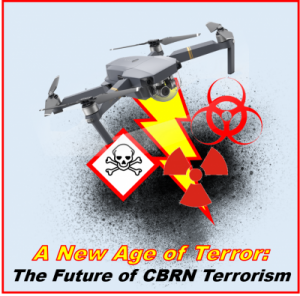


 Synthetic biology offers improved access to biological weapons agents, especially to otherwise highly controlled agents. Synthetic biology can be used to create new or modify existing organisms.
Synthetic biology offers improved access to biological weapons agents, especially to otherwise highly controlled agents. Synthetic biology can be used to create new or modify existing organisms. Drones also make CBRN agent delivery easier. Drones offer terrorists access to the air. Terrorists can use them to fly over physical barriers, such as fencing or walls to carry out an attack. Drones also give terrorists more control over where they launch an attack: they can choose a well-defended position or one proximate to an escape route. Although small drone payload sizes limit the amount of agent that can be delivered, terrorists can acquire multiple drones.
Drones also make CBRN agent delivery easier. Drones offer terrorists access to the air. Terrorists can use them to fly over physical barriers, such as fencing or walls to carry out an attack. Drones also give terrorists more control over where they launch an attack: they can choose a well-defended position or one proximate to an escape route. Although small drone payload sizes limit the amount of agent that can be delivered, terrorists can acquire multiple drones.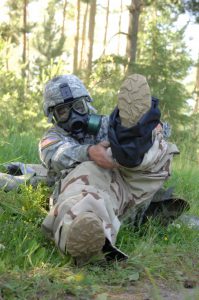 If CBRN terrorism is becoming easier, U.S. forces can be expected to be at greater risk of CBRN attack and face more frequent attacks. An attack with infectious biological weapons from afar would not likely be discovered until well after the attack took place. Although still quite unlikely, a major biological attack could cause massive harm. Timed correctly, a CBRN terror attack could delay deployment of troops to a combat zone, inhibit launch of close-air support assets, or harm morale by delaying delivery of delicious pizza MREs.
If CBRN terrorism is becoming easier, U.S. forces can be expected to be at greater risk of CBRN attack and face more frequent attacks. An attack with infectious biological weapons from afar would not likely be discovered until well after the attack took place. Although still quite unlikely, a major biological attack could cause massive harm. Timed correctly, a CBRN terror attack could delay deployment of troops to a combat zone, inhibit launch of close-air support assets, or harm morale by delaying delivery of delicious pizza MREs.
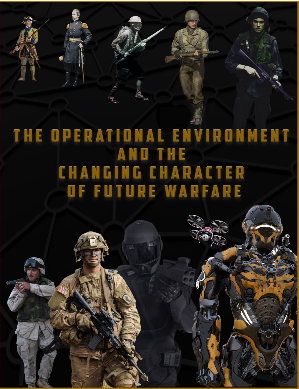 contrarians in our network to share their alternative perspectives and analyses regarding the Operational Environment. Starting today, we begin our new series of “Tenth Man” posts examining the foundational assumptions of
contrarians in our network to share their alternative perspectives and analyses regarding the Operational Environment. Starting today, we begin our new series of “Tenth Man” posts examining the foundational assumptions of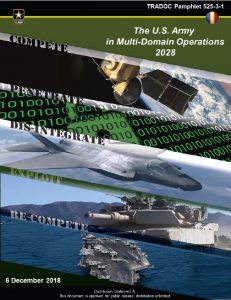 TRADOC Pamphlet 525-3-1 The U.S. Army in Multi-Domain Operations 2028
TRADOC Pamphlet 525-3-1 The U.S. Army in Multi-Domain Operations 2028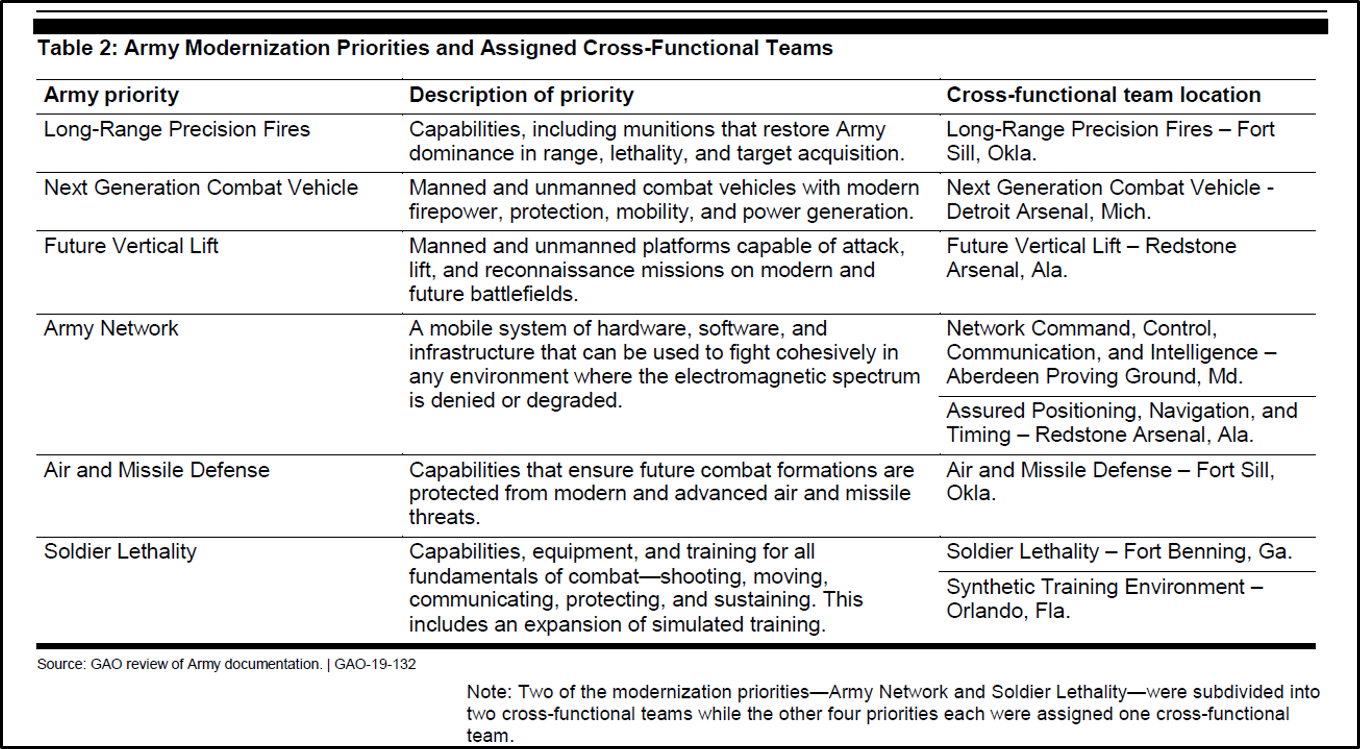
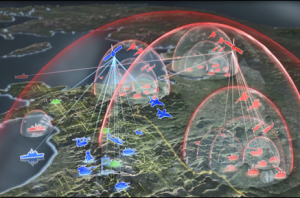 in Competition and, when necessary, penetrate and dis-integrate their Anti-Access / Area Denial (A2/AD) systems to exploit the resultant freedom of maneuver and win decisively in armed Conflict, forcing a return to Competition on terms favorable to the U.S.
in Competition and, when necessary, penetrate and dis-integrate their Anti-Access / Area Denial (A2/AD) systems to exploit the resultant freedom of maneuver and win decisively in armed Conflict, forcing a return to Competition on terms favorable to the U.S.